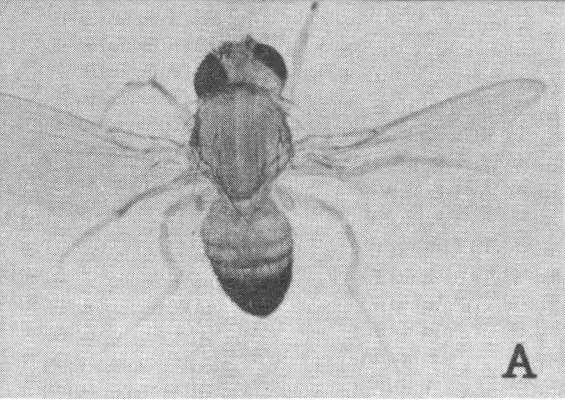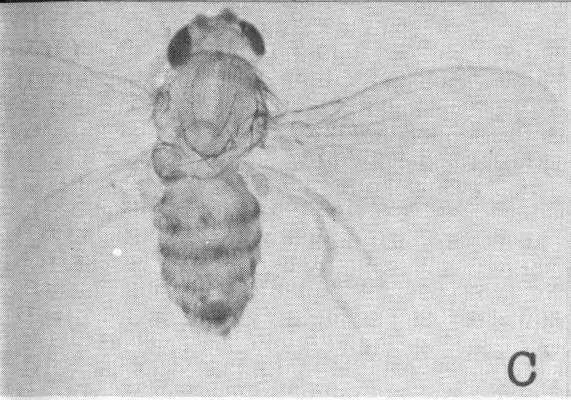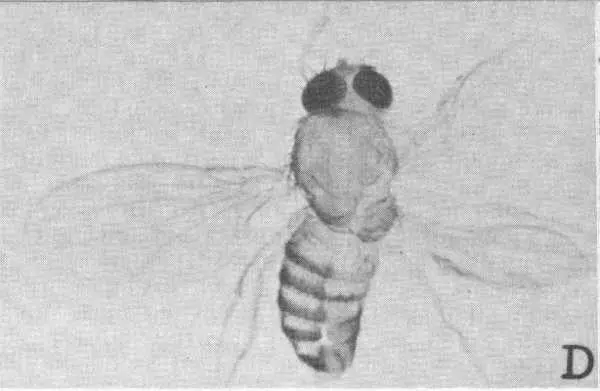Айзек Азимов - The Genetic Effects of Radiation
Здесь есть возможность читать онлайн «Айзек Азимов - The Genetic Effects of Radiation» весь текст электронной книги совершенно бесплатно (целиком полную версию без сокращений). В некоторых случаях можно слушать аудио, скачать через торрент в формате fb2 и присутствует краткое содержание. Год выпуска: 2018, Издательство: epubBooks Classics, Жанр: Медицина, Биология, на английском языке. Описание произведения, (предисловие) а так же отзывы посетителей доступны на портале библиотеки ЛибКат.
- Название:The Genetic Effects of Radiation
- Автор:
- Издательство:epubBooks Classics
- Жанр:
- Год:2018
- ISBN:нет данных
- Рейтинг книги:4 / 5. Голосов: 1
-
Избранное:Добавить в избранное
- Отзывы:
-
Ваша оценка:
- 80
- 1
- 2
- 3
- 4
- 5
The Genetic Effects of Radiation: краткое содержание, описание и аннотация
Предлагаем к чтению аннотацию, описание, краткое содержание или предисловие (зависит от того, что написал сам автор книги «The Genetic Effects of Radiation»). Если вы не нашли необходимую информацию о книге — напишите в комментариях, мы постараемся отыскать её.
The Genetic Effects of Radiation — читать онлайн бесплатно полную книгу (весь текст) целиком
Ниже представлен текст книги, разбитый по страницам. Система сохранения места последней прочитанной страницы, позволяет с удобством читать онлайн бесплатно книгу «The Genetic Effects of Radiation», без необходимости каждый раз заново искать на чём Вы остановились. Поставьте закладку, и сможете в любой момент перейти на страницу, на которой закончили чтение.
Интервал:
Закладка:
Dose and Consequence
Radiation Sickness
The danger to the individual as a result of overexposure to high–energy radiation was understood fairly soon but not before some tragic experiences were recorded.
One of the early workers with radioactive materials, Pierre Curie, deliberately exposed a patch of his skin to the action of radioactive radiations and obtained a serious and slow–healing burn. His wife, Marie Curie, and their daughter, Irène Joliot–Curie, who spent their lives working with radioactive materials, both died of leukemia, very possibly as the result of cumulative exposure to radiation. Other research workers in the field died of cancer before the full necessity of extreme caution was understood.
The damage done to human beings by radiation could first be studied on a large scale among the survivors of the nuclear bombings of Hiroshima and Nagasaki in 1945. Here marked symptoms of radiation sickness were observed. This sickness often leads to death, though a slow recovery is sometimes possible.
In general, high–energy radiation damages the complex molecules within a cell, interfering with its chemical machinery to the point, in extreme cases, of killing it. (Thus, cancers, which cannot safely be reached with the surgeon’s knife, are sometimes exposed to high–energy radiation in the hope that the cancer cells will be effectively killed in that manner.)
The delicate structure of the genes and chromosomes is particularly vulnerable to the impact of high–energy radiation. Chromosomes can be broken by such radiation and this is the main cause of actual cell death. A cell that is not killed outright by radiation may nevertheless be so damaged as to be unable to undergo replication and mitosis.
If a cell is of a type that will not, in the course of nature, undergo division, the destruction of the mitosis machinery is not in itself fatal to the organism. A creature like Drosophila , which, in its adult stage, has very few cell divisions going on among the ordinary cells of its body, can survive radiation doses a hundred times as great as would suffice to kill a man.
In a human being, however—even in an adult who is no longer experiencing overall growth—there are many tissues whose cells must undergo division throughout life. Hair and fingernails grow constantly, as a result of cell division at their roots. The outer layers of skin are steadily lost through abrasion and are replaced through constant cell division in the deeper layers. The same is true of the lining of the mouth, throat, stomach, and intestines. Too, blood cells are continually breaking up and must be replaced in vast numbers.
If radiation kills the mechanism of division in only some of these cells, it is possible that those that remain reasonably intact can divide and eventually replace or do the work of those that can no longer divide. In that case, the symptoms of radiation sickness are relatively mild in the first place and eventually disappear.
Past a certain critical point, when too many cells are made incapable of division, this is no longer possible. The symptoms, which show up in the growing tissues particularly (as in the loss of hair, the misshaping or loss of fingernails, the reddening and hemorrhaging of skin, the ulceration of the mouth, and the lowering of the blood cell count), grow steadily more severe and death follows.
Radiation and Mutation
Where radiation is insufficient to render a cell incapable of division, it may still induce mutations, and it is in this fashion that skin cancer, leukemia, and other disorders may be brought about. [6] For details on somatic effects of radiation, see Your Body and Radiation , a companion booklet in this series.

Studies at the California Institute of Technology furnish information on the nature of radiation effects on genes. The experiments produced fruit flies with three or four wings and double or partially doubled thoraxes by causing gene mutation through X–irradiation and chromosome rearrangements. A is a normal male Drosophila; B is a four–winged male with a double thorax; and C and D are three–winged flies with partial double thoraxes.

Four–winged male with a double thorax

Three–winged fly with partial double thoraxes

Three–winged fly with partial double thoraxes
Mutations can be brought about in the sex cells, too, of course, and when this happens it is succeeding generations that are affected and not merely the exposed individual. Indeed, where the sex cells are concerned, the relatively mild effect of mutation is more serious than the drastic one of nondivision. A fertilized ovum that cannot divide eventually dies and does no harm; one that can divide but is altered, may give rise to an individual with one of the usual kinds of major or minor physical defects.
The effect of high–energy radiation on the genetic mechanism was first demonstrated experimentally in 1927 by Muller. Using Drosophila he showed that after large doses of X rays, flies experienced many more lethal mutations per chromosome than did similar flies not exposed to radiation. The drastic differences he observed proved the connection between radiation and mutation at once.
Later experiments, by Muller and by others, showed that the number of mutations was directly proportional to the quantity of radiation absorbed. Doubling the quantity of radiation absorbed doubled the number of mutations, tripling the one tripled the other, and so on. This means that if the number of mutations is plotted against the amount of radiation absorbed, a straight line can be drawn.
It is generally believed that the straight line continues all the way down without deviation to very low radiation absorptions. This means there is no “threshold” for the mutational effect of radiation. No matter how small a dosage of radiation the gonads receive, this will be reflected in a proportionately increased likelihood of mutated sex cells with effects that will show up in succeeding generations.
In this respect, the genetic effect of radiation is quite different from the somatic effect. A small dose of radiation may affect growing tissues and prevent a small proportion of the cells of those tissues from dividing. The remaining, unaffected cells take up the slack, however, and if the proportion of affected cells is small enough, symptoms are not visible and never become visible. There is thus a threshold effect: The radiation absorbed must be more than a certain amount before any somatic symptoms are manifest.
Matters are quite different where the genetic effect is concerned. If a sex cell is damaged and if that sex cell is one of the pair that goes into the production of a fertilized ovum, a damaged organism results. There is no margin for correction. There is no unaffected cell that can take over the work of the damaged sex cell once fertilization has taken place.
Suppose only one sex cell out of a million is damaged. If so, a damaged sex cell will, on the average, take part in one out of every million fertilizations. And when it is used, it will not matter that there are 999,999 perfectly good sex cells that might have been used—it was the damaged cell that was used. That is why there is no threshold in the genetic effect of radiation and why there is no “safe” amount of radiations insofar as genetic effects are concerned. However small the quantity of radiation absorbed, mankind must be prepared to pay the price in a corresponding increase of the genetic load.
Читать дальшеИнтервал:
Закладка:
Похожие книги на «The Genetic Effects of Radiation»
Представляем Вашему вниманию похожие книги на «The Genetic Effects of Radiation» списком для выбора. Мы отобрали схожую по названию и смыслу литературу в надежде предоставить читателям больше вариантов отыскать новые, интересные, ещё непрочитанные произведения.
Обсуждение, отзывы о книге «The Genetic Effects of Radiation» и просто собственные мнения читателей. Оставьте ваши комментарии, напишите, что Вы думаете о произведении, его смысле или главных героях. Укажите что конкретно понравилось, а что нет, и почему Вы так считаете.








![Айзек Азимов - Земля Ханаанская. Родина иудаизма и христианства[The Land of Canaan]](/books/172206/ajzek-azimov-zemlya-hanaanskaya-rodina-iudaizma-i-h-thumb.webp)



